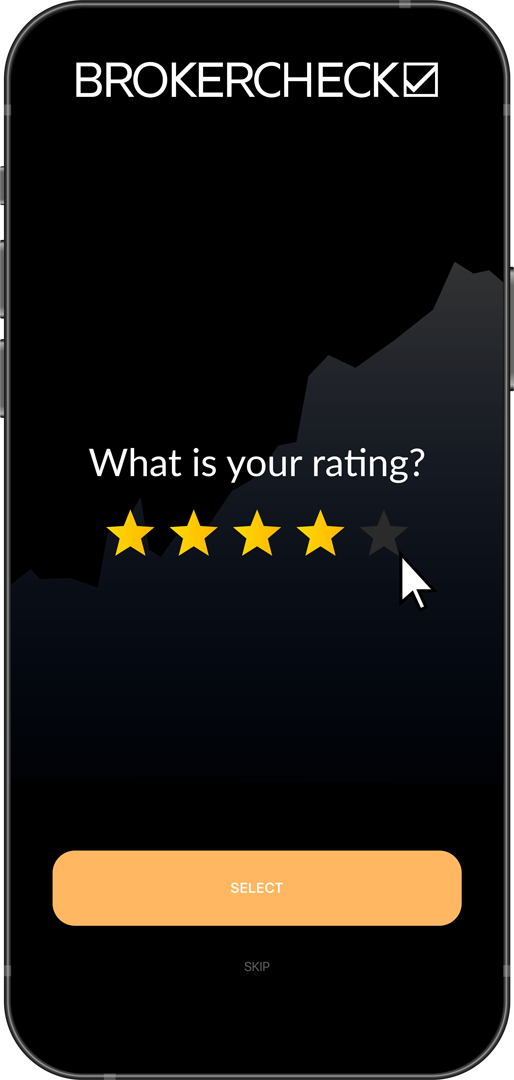1. Introduction to Directional Movement Index (DMI)
1.1 What is the Directional Movement Index?
The Directional Movement Index (DMI) is a technical analysis tool designed to identify the directionality of price movements in financial markets. Developed by J. Welles Wilder Jr. in 1978, the DMI is part of a series of indicators that also includes the Average Directional Index (ADX), which measures the strength of the trend.
DMI consists of two lines, the Positive Directional Indicator (+DI) and the Negative Directional Indicator (-DI). These indicators are designed to capture the movement in upward and downward price trends, respectively.
1.2 Purpose of DMI
The primary purpose of DMI is to provide traders and investors with insights into market trend direction and strength. This information is crucial in decision-making processes, particularly in determining the right time to enter or exit a trade. By analyzing the relationship between the +DI and -DI lines, traders can gauge the prevailing market sentiment and adjust their strategies accordingly.

1.3 Components of the DMI
The DMI consists of three key components:
- Positive Directional Indicator (+DI): Measures the upward price movement and is indicative of buying pressure.
- Negative Directional Indicator (-DI): Measures the downward price movement and signifies selling pressure.
- Average Directional Index (ADX): Averages the values of +DI and -DI over a specified period and indicates the strength of the trend, regardless of its direction.
1.4 Calculating the DMI
The calculation of the DMI involves several steps, primarily focusing on comparing consecutive lows and highs to ascertain trend direction and strength. The +DI and -DI are calculated based on the differences in consecutive highs and lows, and then smoothed over a period, typically 14 days. The ADX is calculated by taking the moving average of the difference between the +DI and -DI, and then dividing it by the sum of +DI and -DI.
1.5 Significance in Financial Markets
DMI is widely used in various financial markets, including stocks, forex, and commodities. It’s particularly valuable in markets that exhibit strong trending behaviors. By providing insights into trend direction and momentum, DMI helps traders optimize their trading strategies for different market conditions.
1.6 Summary Table
| Aspect | Description |
|---|---|
| Developed by | J. Welles Wilder Jr. in 1978 |
| Components | +DI, -DI, ADX |
| Purpose | Identifying trend direction and strength |
| Calculation Basis | Differences in consecutive highs and lows |
| Typical Period | 14 days (can vary) |
| Application | Stocks, Forex, Commodities, and other financial markets |
2. Calculation Process of the Directional Movement Index (DMI)
2.1 Introduction to DMI Calculation
The calculation of the Directional Movement Index (DMI) involves a series of steps that analyze price movements to ascertain the direction and strength of market trends. This process is integral to the effective use of DMI in trading strategies.
2.2 Step-by-Step Calculation
Determining Directional Movements:
- Positive Directional Movement (+DM): The difference between the current high and the previous high.
- Negative Directional Movement (-DM): The difference between the previous low and the current low.
- If +DM is greater than -DM and both are greater than zero, retain +DM and set -DM to zero. If -DM is greater, do the reverse.
True Range (TR):
- The largest of the following three values: a) Current High minus Current Low b) Current High minus Previous Close (absolute value) c) Current Low minus Previous Close (absolute value)
- TR is a measure of volatility and is crucial in the calculation of +DI and -DI.
Smoothed True Range and Directional Movements:
- Typically, a 14-day period is used.
- Smoothed TR = Previous Smoothed TR – (Previous Smoothed TR / 14) + Current TR
- Smoothed +DM and -DM are calculated similarly.
Calculating +DI and -DI:
- +DI = (Smoothed +DM / Smoothed TR) x 100
- -DI = (Smoothed -DM / Smoothed TR) x 100
- These values represent the directional movement indicators as a percentage of the total price range.
Average Directional Index (ADX):
- The ADX is calculated by first determining the Absolute Difference between +DI and -DI and then dividing this by the sum of +DI and -DI.
- The resultant value is smoothed with a moving average, typically over 14 days, to get the ADX.
2.3 Example Calculation
Let’s consider an example to illustrate the DMI calculation process:
- Assume the following data for a 14-day period:
- Highs, Lows, and Closes of a stock.
- Calculate +DM, -DM, and TR for each day.
- Smooth these values over the 14-day period.
- Compute the +DI and -DI.
- Calculate the ADX using the smoothed values of +DI and -DI.
2.4 Interpretation of Calculated Values
- High +DI and Low -DI: Indicates a strong upward trend.
- High -DI and Low +DI: Signifies a strong downward trend.
- Crossover of +DI and -DI: Suggests potential trend reversals.
| Step | Description |
|---|---|
| Directional Movements | Comparison of consecutive highs and lows |
| True Range | Measurement of volatility |
| Smoothing | Averaging over a typical period of 14 days |
| Calculating +DI and -DI | Determines the strength of upward/downward movements |
| Average Directional Index (ADX) | Averages the differences between +DI and -DI |
3. Optimal Values for DMI Setup in Different Timeframes
3.1 Understanding Timeframe Variability
The effectiveness of the Directional Movement Index (DMI) can vary significantly across different timeframes. Traders use DMI in short-term, medium-term, and long-term analysis, each requiring adjustments in the indicator’s settings for optimal performance.
3.2 Short-Term Trading
- Timeframe: Typically ranges from 1 to 15 minutes.
- Optimal Period for DMI: A shorter period, like 5 to 7 days, is more responsive to price movements.
- Characteristics: Provides quick signals, but may increase the risk of false positives due to market noise.
3.3 Medium-Term Trading
- Timeframe: Usually spans from 1 hour to 1 day.
- Optimal Period for DMI: A moderate period, such as 10 to 14 days, balances responsiveness with reliability.
- Characteristics: Suitable for swing traders, offering a balance between reaction speed and trend confirmation.
3.4 Long-Term Trading
- Timeframe: Involves daily to monthly charts.
- Optimal Period for DMI: A longer period, like 20 to 30 days, reduces sensitivity to short-term price fluctuations.
- Characteristics: Provides more reliable signals for long-term trends but may delay entry and exit points.
3.5 Customizing the DMI for Different Assets
Different financial assets might also require customization of the DMI settings. For instance, highly volatile stocks may benefit from a shorter period to capture rapid price changes, while less volatile assets might need a longer period to filter out insignificant movements.

| Timeframe | Optimal Period | Characteristics |
|---|---|---|
| Short-Term | 5-7 days | Quick signals, higher risk of false positives |
| Medium-Term | 10-14 days | Balanced response and reliability |
| Long-Term | 20-30 days | Reliable trend identification, slower reaction |
4. Interpretation of DMI Signals
4.1 Fundamentals of DMI Interpretation
Understanding the signals generated by the Directional Movement Index (DMI) is crucial for its effective use in trading. The interaction between the +DI, -DI, and ADX lines offers valuable insights into market trends and potential trading opportunities.
4.2 Analyzing +DI and -DI Crossovers
- +DI Crossing Above -DI: This is typically interpreted as a bullish signal, suggesting an uptrend is gaining strength.
- -DI Crossing Above +DI: Indicates a bearish signal, suggesting a strengthening downtrend.

4.3 The Role of ADX in Signal Confirmation
- High ADX Value (>25): Suggests a strong trend, either up or down.
- Low ADX Value (<20): Indicates a weak or sideways trend.
- Rising ADX: Implies an increasing trend strength, whether the trend is up or down.
4.4 Identifying Trend Reversals
- DMI Crossover with Rising ADX: A crossover of the +DI and -DI lines, coupled with a rising ADX, can signal a potential trend reversal.
- ADX Peaking: When the ADX peaks and begins to turn down, it often signals that the current trend is weakening.
4.5 Using DMI for Range-Bound Markets
- Low and Stable ADX: In range-bound markets, where the ADX remains low and stable, DMI crossovers might be less reliable.
- DMI Oscillation: In such markets, the DMI lines tend to oscillate without a clear direction, making trend-based trading strategies less effective.
| Signal Type | Interpretation | ADX Role |
|---|---|---|
| +DI crosses above -DI | Bullish trend indication | High ADX strengthens this signal |
| -DI crosses above +DI | Bearish trend indication | High ADX strengthens this signal |
| DMI crossover with rising ADX | Potential trend reversal | Rising ADX indicates increasing trend strength |
| ADX peaks and turns down | Weakening of current trend | Useful for identifying trend reversals |
| Low and stable ADX | Indicative of a range-bound market | DMI signals are less reliable |
5. Combining the DMI with Other Indicators
5.1 Importance of Indicator Diversification
While the Directional Movement Index (DMI) is a powerful tool on its own, combining it with other technical indicators can enhance its effectiveness and provide a more comprehensive view of market conditions. This multi-indicator approach helps in validating signals and reducing the likelihood of false positives.
5.2 Complementary Indicators to DMI
1. Moving Averages:
- Usage: Identify overall trend direction.
- Combination with DMI: Use moving averages to confirm the trend indicated by DMI. For instance, a +DI crossover with the ADX above 25, combined with price above a moving average, can reinforce a bullish signal.
2. Relative Strength Index (RSI):
- Usage: Measure the speed and change of price movements to identify overbought or oversold conditions.
- Combination with DMI: RSI can help validate DMI signals. For example, a bullish DMI signal coupled with an RSI reading above 70 might indicate an overbought condition, signaling caution.
3. Bollinger Bands:
- Usage: Assess market volatility and overbought/oversold conditions.
- Combination with DMI: Bollinger Bands can help in understanding the volatility context of DMI signals. A DMI signal within a narrow Bollinger Band might indicate a breakout potential.

MACD (Moving Average Convergence Divergence):
- Usage: Identify changes in trend strength, direction, momentum, and duration.
- Combination with DMI: MACD can be used alongside DMI to confirm trend changes. A positive MACD crossover (bullish) along with a +DI crossing above -DI can be a strong indication of an upward trend.
Stochastic Oscillator:
- Usage: Track momentum by comparing a particular closing price to a range of its prices over a certain period.
- Combination with DMI: When both DMI and Stochastic suggest overbought or oversold conditions, it can provide more confidence in the trade signal.
| Indicator | Usage | Combination with DMI |
|---|---|---|
| Moving Averages | Trend Identification | Confirm DMI trend signals |
| Relative Strength Index (RSI) | Overbought/Oversold Conditions | Validate DMI signals, especially in extreme conditions |
| Bollinger Bands | Market Volatility and Price Levels | Contextualize DMI signals with volatility |
| MACD | Trend Strength and Momentum | Confirm trend changes signaled by DMI |
| Stochastic Oscillator | Momentum and Overbought/Oversold Conditions | Reinforce DMI signals, especially in extreme conditions |
6. Risk Management Strategies When Using the DMI
6.1 The Role of Risk Management in Trading
Effective risk management is essential in trading, especially when using technical indicators like the Directional Movement Index (DMI). It helps in mitigating losses and protecting profits while maximizing the potential benefits of the DMI.
6.2 Setting Stop-Loss Orders
1. Establishing Stop-Loss Levels:
- Utilize DMI signals to set stop-loss orders. For instance, if a trade is entered on a +DI crossover above -DI, a stop-loss can be placed below the recent swing low.
2. Trailing Stops:
- Implement trailing stops to protect profits. As the trade moves in favor, adjust the stop-loss order accordingly to lock in gains while allowing room for further movement.
6.3 Position Sizing
1. Conservative Position Sizing:
- Adjust the size of the trading position based on the strength of the DMI signal. Stronger signals (e.g., high ADX values) may warrant larger positions, while weaker signals suggest smaller positions.
2. Diversification:
- Spread risk across different assets or trades rather than concentrating on a single position, even when DMI signals are strong.
6.4 Using DMI for Risk Assessment
1. Trend Strength and Risk:
- Use the ADX component of the DMI to assess the strength of a trend. Strong trends (high ADX) are generally less risky, while weak trends (low ADX) may increase risk.
2. Volatility Analysis:
- Combine DMI with volatility indicators to understand market conditions better and adjust risk levels. For example, higher volatility might call for tighter stop-losses or smaller position sizes.
6.5 Incorporating Other Indicators for Risk Management
1. RSI and Overbought/Oversold Conditions:
- Use RSI in conjunction with DMI to identify potential reversal points that could signal increased risk.
2. Moving Averages for Trend Confirmation:
- Confirm DMI signals with moving averages to ensure trades are in line with the overall market trend, thus reducing risk.
| Strategy | Description |
|---|---|
| Stop-Loss Orders | Protect from large losses based on DMI signals |
| Trailing Stops | Secure profits while allowing for market movement |
| Position Sizing | Adjust trade size based on signal strength |
| Diversification | Spread risk across multiple trades |
| Trend Strength Assessment | Use ADX to evaluate trend-related risks |
| Volatility Analysis | Combine with volatility indicators for risk assessment |
| Additional Indicators | Use RSI, moving averages for enhanced risk management |











